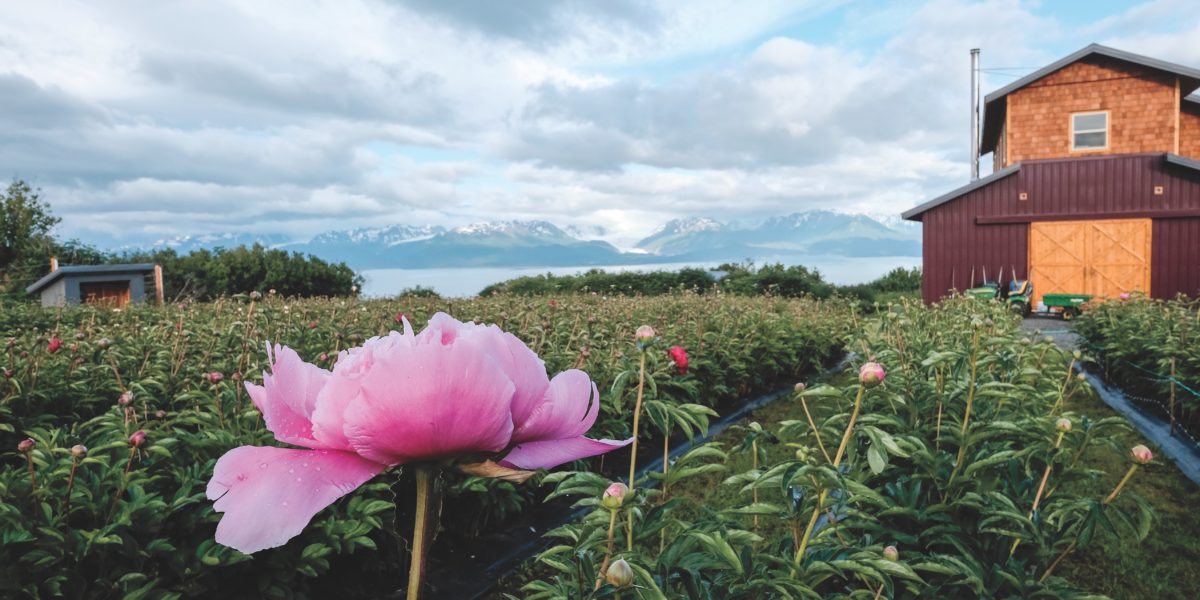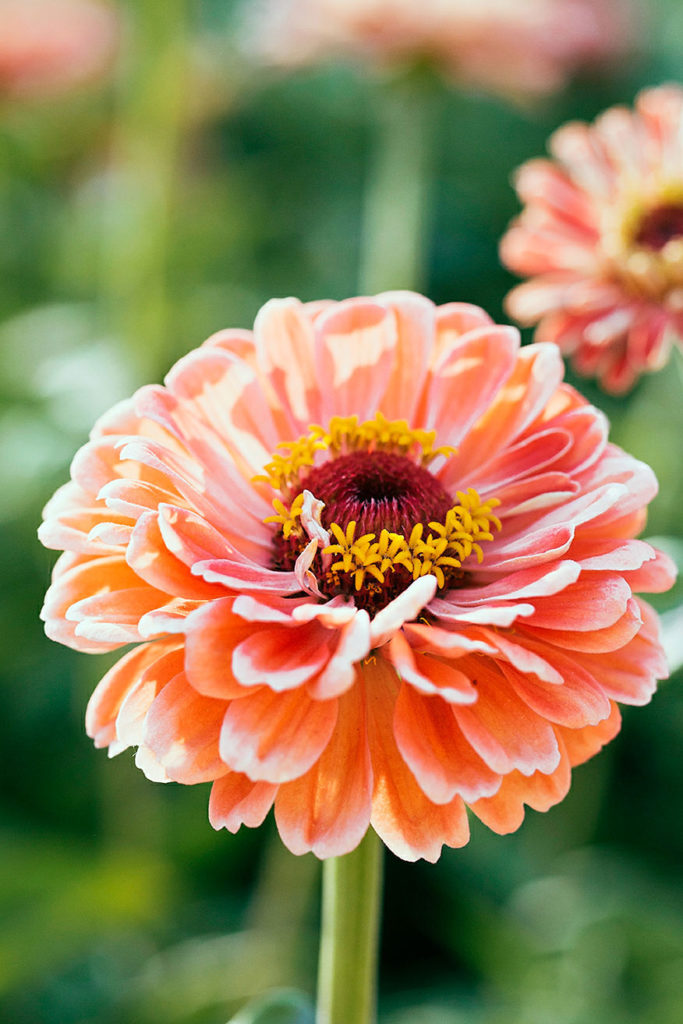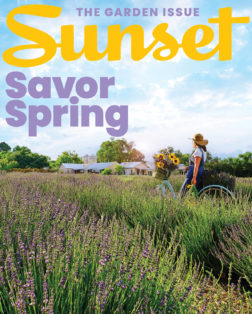
Annuals and Perennials: Answers to All Your Questions
The most important thing to remember? Put the right plant in the right location.

Thomas J. Story
Got questions about annual and perennials? We’ve got you covered, thanks to the Sunset Gardener’s Answer Book. Published by Sunset Magazine and the editors of Sunset Books, it’s a compilation of solutions for beginners as well as experienced green thumbers. Here, we’ve adapted some insight to elevate your spring gardening.
Annuals and perennials are the basic flower producers. Annuals complete their life cycle in less than a year. Perennials live longer than two years. (There are more particulars, but we’ll get into that later.)
The single most important way to keep annuals and perennials problem-free is to place the right plant in the right location. (Heat-loving zinnias can’t produce in the shade; cinerarias love the cool shade and won’t survive in the sunny spots.) To be sure you avoid problem locations, check the needs of individual plants in the encyclopedia section of the Sunset Western Garden Book.
Now, we’re going to provide you with answers to questions of a general nature, as well as solutions to some specific plant problems you might encounter.

Thomas J. Story
Keep in mind that the best way to deal with problems is to prevent them. Here are a few simple guidelines:
- Select healthy plants.
- Prepare soil property before planting.
- Plant in the right location at the right time.
- Follow a good watering, weeding, and feeding schedule
- Protect from pests and disease
- Mulch to retain water and discourage weeds.
But, we get that some issues might come up. So, let’s get right into it. Here’s everything you need to know about annuals and perennials.
What are annuals? Perennials? Biennials?
Question: What is the difference between “annual” and “perennial”? I’m really confused when I read about “perennial grown as an annual.” Also, what is an herbaceous perennial? And what does “biennial” mean?
Answer: To set the record straight, here are a few definitions:
- Annual: A plan that completes its life cycle within a year and then dies. The life cycle of an annual typically starts when the seed germinates in late winter or early spring. The plant grows and flowers in spring or summer, then dies with the first frosts of fall.
- Perennial: Distinguished from an annual by longer life. Wherever climate and garden conditions are suitable, a perennial will live—growing larger and blooming each year—for years. On the other hand, perennials are distinguished from shrubs by the lack of woody plant parts. When you read about an “herbaceous perennial,” the term simply means “like an herb”—not woody. Many perennials die down to the ground at the end of the summer growing season, remain dormant and out of sight for the winter, and then grow new stems and leaves at the start of the next growing season in spring.
- Perennial grown as an annual: A plant which can probably live for several years but which looks best in the garden when grown for two single seasons, then discarded.
- Biennial: A small category of plants, neither annual nor perennial, is known as “biennial.” These plants behave as though they were lazy annuals. Typically, biennials germinate from seed in spring and devote the first year’s growing season to developing. During the second spring or summer, the following year, they flower, set seed, and die at the end of that growing season.

Thomas J. Story
Achillea in mid-life crisis
Question: For years I’ve had a large clump of achillea that blooms beautifully every summer. Now I notice that the center of the plant has died out, leaving it doughnut-shaped. Is this caused by disease?
Answer: Disease isn’t the cause—your achillea has reached middle age. As the plant ages, the clump grows larger: the center contains the oldest part of the clump, while the newer growth expands around the outside. When a perennial starts to die out in the center, nature is giving you a sure sign that it’s time to divide the plant (fall is the best season). After pruning the plant down to about 6 inches, dig out the entire clump and discard the dead center. Break the outside ring of plants into any number of smaller clumps and replant.
My neighbor’s annuals bloom sooner
Problem: The annuals I plant always seem to take longer to bloom than any of my neighbors’. I water them diligently and start fertilizing regularly a week or two after planting.
Solution: You are not getting the food to them quickly enough. Begin feeding immediately after planting in the garden. Dry, granular forms of complete fertilizer are effective, but the liquids are easier to use.
Will annuals reseed themselves?
Problem: I love annuals, but replanting a new flower garden every year is more than I have time for. Are there any annuals that will reseed themselves naturally without any help from me?
Answer: Any annual plant will take care of its own propagation—all it needs from you are proper climatic and cultural conditions. Some annuals, too, reseed freely in less than perfect conditions. Nonhybridized varieties of plants (those closest to the way they were in the wild) tend to reseed much more readily than hybrids.

Photo by Schnuddel / Getty Images
Any unthirsty annuals?
Question: I’ve always thought of annuals as being thirsty plants. Here in Tucson, Arizona, the amount of water we’re able to use is limited. Are there any annuals that do well with minimum watering?
Answer: Coreopsis, gaillardia, and portulaca all are fairly drought-tolerant. For lists of other unthirsty annuals and other kinds of plants, see pages 161-163 of the Sunset Western Garden Book.
Are both OK in the same border?
Question: Are there problems with planting annuals and perennials in the same border?
Answer: No rule says that any gardener has to arrange a garden in any specific way. In fact, some of the most attractive flower borders contain not only annuals and perennials, but flowering shrubs, trees, herbs, and even a vegetable or two.
These two won’t take mollycoddling!
Question: Can I get the gold California poppy and the blue lupine I see growing so beautifully next to the highway to grow in my yard? Where can I buy plants?
Answer: These wildflowers are generally unavailable as plants, but the seeds are present in most seed racks throughout California. You can get these plants to grow in your garden if you don’t baby them with too much water and fertilizer. Remember that where California poppies and lupines grow well, next to highways and on hillsides, conditions are relatively harsh. Neither plant is fussy about soil type and will self-sow, returning year after year. Remember, however, that they don’t naturalize easily in meadows or any situation where tall grass can overwhelm them.

Sunset’s Garden Issue 2022
More from this issue:
- Need Help Taking Care of Your Air Plants? We’ve Got Just the Guy
- Stroll Through Lotusland, the Fantastical Botanic Garden of Your Dreams
- What Happens When the West Coast Barbecue King Sets out to Conquer Fried Chicken?
- Add Some Color to Your Brunch with Edible Flowers
For cut-flower continuity
Problem: I make floral arrangements for friends and my church so I need to grow an abundance of cut flowers. The trouble is, I have a lot of flowers early in summer and then they taper off to almost none until chrysanthemum time in the fall. How can I plant for better, constant flower production?
Solution: There are literally hundreds of choices for flower color, all four seasons of the year. For listings of flowers by season, and climate zones, see pages 135-143 of the Sunset Western Garden Book.
My rocky slope needs color
Question: There is a hilly, somewhat rocky area in full sun that I see from the kitchen and dining room windows. I would like to scatter seeds that would give a wildflower look and that would come back each spring without my having to replant. Are wildflower seeds available; will they reseed easily without much care?
Answer: Several seeds companies specialize in seeds of native grasses and flowers, and some companies even package special wildflower mixtures or specific climate regions. Check at your local nursery for more information on the names and addresses of such seed companies. Larger companies also offer less regionalized wildflower packs with seeds that naturalize almost anywhere. It is important to plant these early (fall or winter) and to do at least a minimal amount of soil preparation.
Will nasturtiums stick around?
Question: I love nasturtiums—the leaves, the flowers, and the seed pods in salads. I would like to plant them in a small vegetable bed I no longer have time to work in. Would nasturtiums stick around for several years after one seeding? Seems to me that I’ve read that they will naturalize in some conditions.
Solution: Nasturtiums grow early. They prefer a soil on the sandy side, but will tolerate other types as long as the bed has regular watering in summer and drains well. Nasturtiums naturalize in almost any area with a mild coastal climate and provide an extremely long season of bloom.
Puny peonies—but I tried hard
Problem: I have watered, fed, and nursed along peonies for several years here in Sherman Oaks (Southern California). My results: half grew spindly leaves, the rest gave me nothing at all. But I want to try again. What should I do?
Answer: There are two classes of peonies, herbaceous and tree peonies. Herbaceous peonies die back to the ground each winter; tree peonies are permanent, deciduous shrubs that grow to a height 6 feet. The herbaceous peony needs a period of winter chilling (temperatures below freezing) to flower well. The tree peony is less dependent on winter chilling to grow and bloom successfully, and is therefore a much better choice for interior Southern California. Both kinds of peony bear similar flowers; the tree peony produces slightly larger blooms. Best to dig out your old peonies and replace with tree peonies. For more information, see Paeonia, pages 444-445 of the Sunset Western Garden Book.
Do perennials last “forever”?
Question: I’m a new gardener and planted perennials, expecting that I’d never have to replant or replace them—my idea of gardening! Is this concept true?
Answer: In short, your concept is partially true, but some perennials are more long-lived than others. We have seen some, in the Pacific Northwest, that continue to bloom in gardens planted generations ago. Others have a tendency to die out after three or four years. All perennials will live indefinitely if they are lifted and divided every two or three years.
Adapted from Sunset Gardener’s Answer Book, Sunset Publishing Corporation, 1983.
